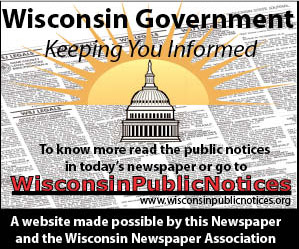Greetings, Norwalk-Ontario-Wilton School District constituents,
Tax bills have begun hitting mailboxes, and there is no doubt that there may be questions over the increase as seen on your most recent tax bills. Each municipality will see a different percentage increase as those amounts are determined by the State of Wisconsin in relation to changes in associated equalized property value. Municipalities statewide saw equalized property values increase anywhere from 10–35-plus %. Local property values rose similarly, but the average among the municipalities in the N-O-W School District was even higher than that statewide. As for the specific tax levy amount, we’ve heard from a few concerned individuals asking why the school portion of their property tax bill rose significantly. We feel that there is likely a lot of confusion over the increase, as tax levy calculation, and public-school funding for that matter, is a very confusing process. In an effort to continue to strive for complete transparency, we want to walk through the levy increase in simple terms and ensure that everyone has an opportunity to completely see where their tax dollars are going.
Tax levies come with some inherently confusing terms and calculations: Mill rates are the amount that a taxpayer is responsible for per $1,000 of property value, but those are contingent on ever-changing fair-market values as set by the State of Wisconsin. Property assessments are increasing at historic levels, which is good for resale situations, but can drive up individuals’ shares of levy amounts as a result of increased property value. School districts have no control over property values or when they are recalculated by the State of Wisconsin. Revenue limits are increasing at the state level, but unfortunately public-school funding determined by the state legislature is not keeping pace, creating a misunderstanding about the nature of how schools can generate revenue. These things all factor into what we are seeing on our tax bills, and have their own value in terms of consideration, but ultimately, what it boils down to is this: a school district’s tax levy is the amount required to fill the gap between anticipated expenses and allocated state/federal funding. The tables below are our attempt to explain why that gap has widened heading into the new year.

The table above breaks down the exact amounts of our total levy from last school year and this school year. A couple of numbers that you will notice: There were sizable changes in the levy amounts for different funds from last year to this year. As a school district that had an upcoming referendum vote which took place in April 2023, and a looming biennial budget that was not yet passed by the state legislature, the district was proactive last year in over levying in Fund 39 in order to be able to under levy this year, so taxpayers would be able to see a lower increase in debt service than what it had the potential to be. That under levy (negative increase) has mitigated the capital referendum debt responsibility for this school year. Conversely, though, we would like to point out the increase in the school operation levy which can be seen in row 2 above and is explained in greater detail below.

This table shows the increase from 22/23 to 23/24 in total levy amount which is comprised of the Operational Levy and the Debt Levy. You can see that 87% of the increase (which is the increase that we, as individuals, are seeing on our tax bill) is attributable to the increase to operational tax revenue. Only 13% is attributable to former and new debt. Simply, the 87% increase is due to rising operational costs not funded by the State of Wisconsin, and not the capital referendum project that was recently passed with 69% community support. Operational funding and referendum funding are two separate entities. We feel that it is important to point this out as there seems to be some misunderstanding about how much of the increase should be attributed to the passage of the referendum and the tax burden that was presented prior to the election. In essence, at 13% of the increase, only 13 cents of every dollar increase that we are seeing on our School District tax bill is due to the total debt responsibility of the district.
Now, the obvious next question is, why the 87-cent increase in the operational portion? This is a completely valid question and absolutely important for us all to be aware of. The biennial budget, approved by our elected officials and signed into law by the governor, establishes the revenue limit amount that the school can bring in in order to operate. However, our actual funding is calculated differently and is contingent upon other parameters and exemptions placed into (or stricken from) the approved budget. To put it into simple numbers, the State signed budget created a revenue limit for our district of $11,000 per student. Our funding, however, came in at roughly $8,515 per student. This marked both an increase to our revenue authority and a decrease to our state funding from last school year. This obviously points out the fact that a considerable added burden was passed along to all of us, the local constituents. We are not pushing for a political conversation, but this is a concern that districts across the state are facing. We are not unique in what we are going through. There is an acknowledgment by our elected officials for the need for increased operational revenue within public schools, but the funding is not following suit. We, as administrators of our district and the stewards of local funds, have been and will continue to be reaching out to our elected officials in search of answers as to why this concerning trend is happening and what can be done to correct it.
Below we have provided the contact information of your local elected officials if you would like to join us in reaching out directly to them with your concerns over public school funding. We welcome any further questions you may have, and we continue to thank you all for your trust and support. There are amazing things going on in our school district, and N-O-W truly has become a destination for education.
Thank you for your time!
Travis Anderson, N-O-W Superintendent
Jeremy Mack, N-O-W Business Agent
Legislative Contacts:
Senator Brad Pfaff
P.O. Box 7882
Madison, WI 53707-7882
Email: SEN.PFAFF@LEGIS.WI.GOV
Loren Oldenberg, Representative 96th District Assembly
P.O. Box 8953
Madison, WI 53708
Email: Rep.Oldenberg@legis.wisconsin.gov
Derrick VanOrden, Wisconsin 3rd District Congressman
210 7th St. South
Suite 204
La Crosse, WI 54601
608-782-2558
Email: N/A
Ron Johnson, Wisconsin US Senator
Email: press@ronjohnson.senate.gov
202-224-5323


